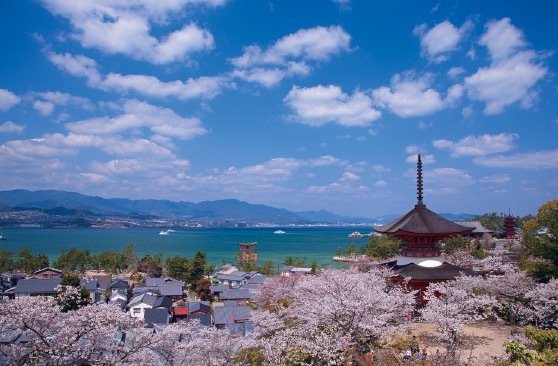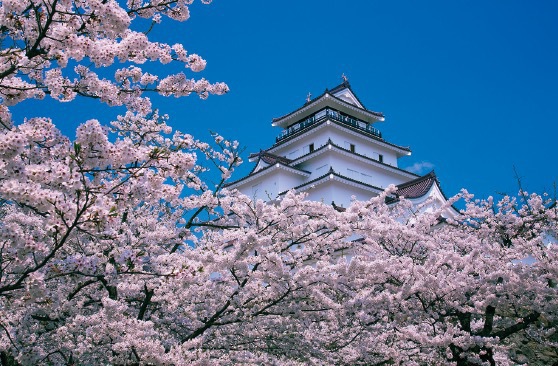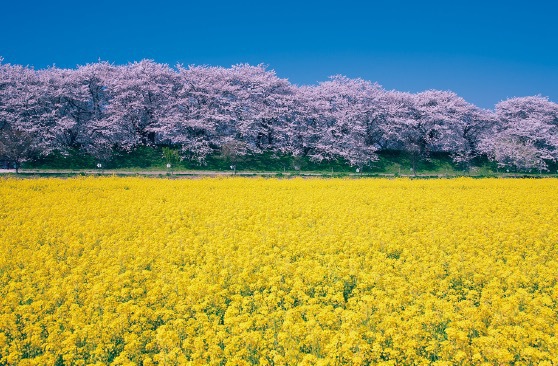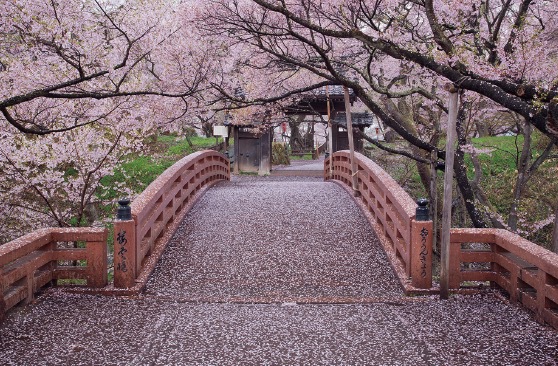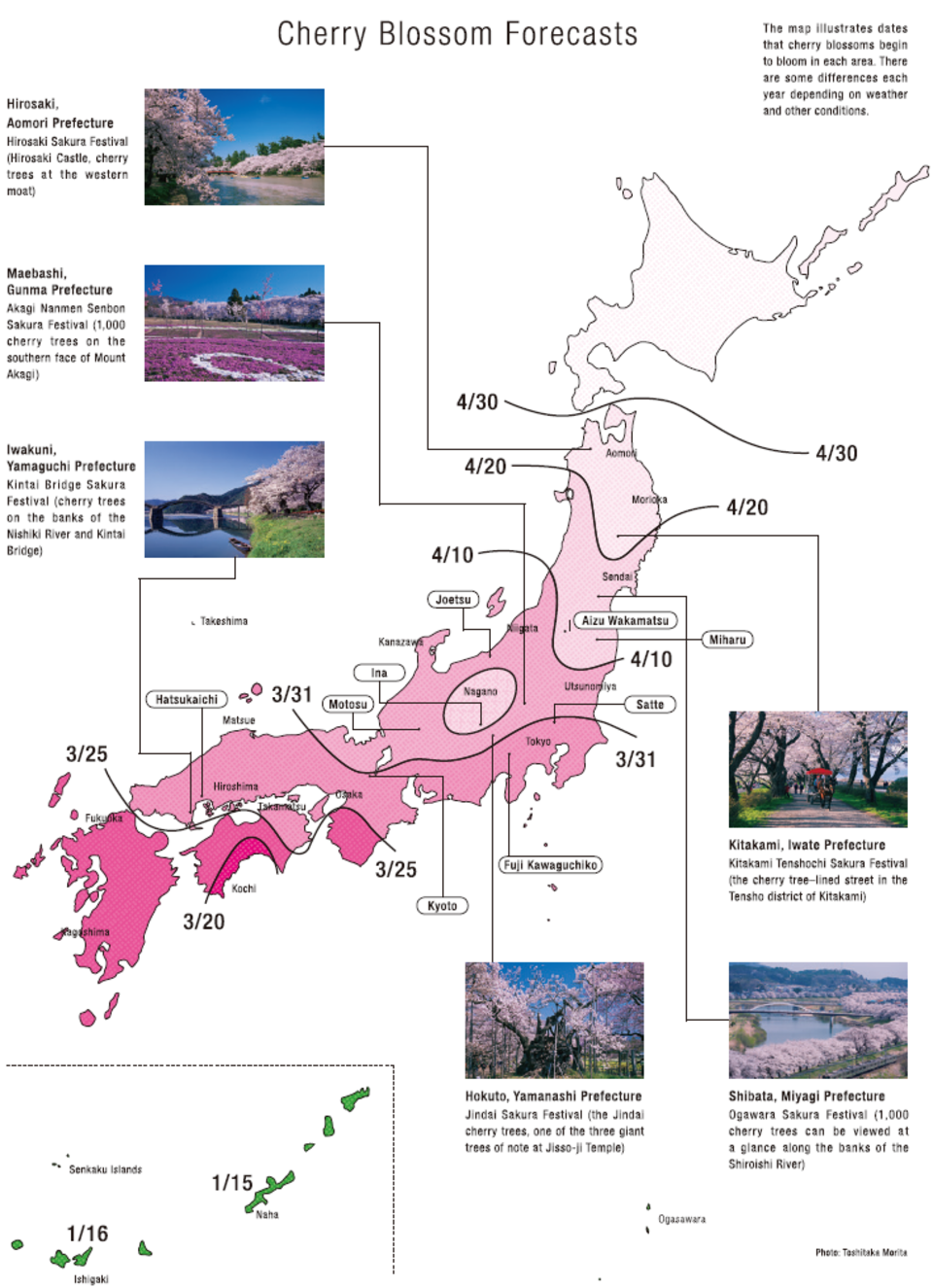On the previous page we wrote, “When you make Japanese friends, ask them where their favorite spots are for viewing cherry blossoms.” Since you are our tomodachi (friends), we would like to tell you about some nice places that are famous for their cherry blossoms. Also, when you come to Japan in spring, please pay attention to the forecast released annually about the timing of cherry trees blooming. Reports are broadcast to inform people where and when the cherry blossoms will be at their best. You can ask people around you, or, if you inquire at your hotel, the staff there will surely tell you. We hope that you will have the opportunity to enjoy the wonderful cherry blossoms so beloved by the Japanese people, and that you will come to love them too!
Fuji Kawaguchiko,
Yamanashi Prefecture
The Fuji Kawaguchiko Cherry Blossom Festival, held from April 12 to April 20, prides itself on about 300 Yoshino cherry trees that bloom beautifully along the roads around the lake, including the north shore Kohoku View Line, the lake’s northern banks, and Ubugasaki, which is famous for the “Upside-Down Fuji” (the perfect reflection of Mount Fuji in the lake). The triple-delight landscape of cherry blossoms, the lake, and Mount Fuji, viewed from Lake Kawaguchiko’s north shore, allows you to appreciate the beauty of Japan all at once.
Hatsukaichi,
Hiroshima Prefecture
Miyajima of Hatsukaichi is one of the so-called three most famous landscapes of Japan, along with Matsushima in Miyagi Prefecture and Amanohashidate in Kyoto Prefecture. Although no festival is held, about 1,600 cherry trees bloom on the entire island of Miyajima, heralding the spring. On the premises of the Itsukushima Shinto Shrine, in the vicinity of the pagoda or the Museum of Treasures located on the western hill, you can enjoy a splendid view of the “floating” Torii Gate through Yoshino cherry blossoms when they are in full bloom.
Joetsu,
Niigata Prefecture
At present, there are about 4,000 cherry trees in Takadajo Park (located on the ruins of Takada Castle), which has long been a famous spot for cherry blossoms. Along the “Sakura Road,” a cherry tree–lined street that is lit up at night by 3,000 paper lanterns, the blossoms are reflected in the moat. This is also one of the three most famous spots in Japan for viewing cherry blossoms at night. From April 4 to April 20, many events, including shows, are held, and over 300 open-air stalls line the street.
Aizu Wakamatsu,
Fukushima Prefecture
From April 11 to May 6, the entire historic site is scheduled to be illuminated, and this will be the largest event of its kind in eastern Japan. Visitors will be able to enjoy nighttime cherry blossom viewing, chosen as one of the 100 best in Japan. Moreover, since visitors will be allowed to climb up to the castle’s tower at night during the cherry blossom season, they will be able to enjoy looking down over 1,000 cherry trees. Sacred palanquins parade amid the trees in full bloom during the Sakura Festival, which is usually held in mid-April.
Satte,
Saitama Prefecture
Approximately 1,000 Yoshino cherry trees, in a line extending for one kilometer, stand along the banks of the Gongendo river and hang over the road, forming a tunnel. Rapeseed flowers (na no hana) grow next to the embankment. The contrast between the pale pink of the cherry trees and the yellow of the rapeseed flowers overwhelms the viewer with its beauty! From March 26 to April 10 (a schedule depending on the state of the cherry blossoms), about 100 open-air stalls line the area, and many events are held.
Ina,
Nagano Prefecture
This is one of the most famous sites in Japan for cherry blossom viewing, long referred to as “the best cherry trees in the world.” The trees that grow in Takato are called takatoko-higan and are distinguished by reddish blossoms that are smaller than those of the Yoshino cherry variety. The Sakura Festival is held from April 1 to April 30. When the cherry trees are in full bloom in mid- April, the entire park seems to be dyed light red. Over 250,000 tourists visit annually to enjoy the blossoms.
































































































































